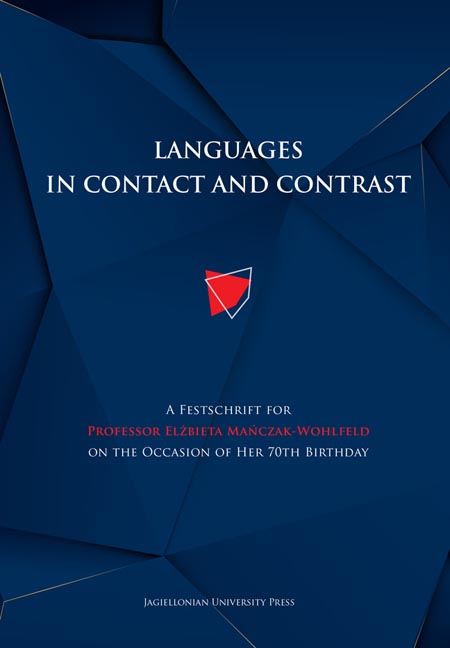 Languages in Contact and Contrast
Languages in Contact and Contrast Published online by Cambridge University Press: 14 October 2023
Cyber- words
This paper focuses on compounds containing the neo-classical combining form cyber- across European languages. The aim is to focus on these compounds in the English language and subsequently verify their adoption as loanwords in other European languages, using the data provided by the Global Anglicism Database (henceforth GLAD) and, subsequently, d ata from national web-based corpora.
The lexical item cyber is quite a new entry in the vocabularies of modern languages − in English the combining form cyber- was introduced in 1961 from cybernetics (dated 1948) − but since the mid-20th century it has become very productive in the formation of compounds referring to the digital world and virtual reality. For example, the term cyborg (1960), which is a blend of ‘cyber’ and ‘organism’, denotes a creature whose human limitations have been extended by means of drugs or artificial control mechanisms. In 1966 the BBC children’s television science-fiction series Doctor Who introduced the word cyberman to the popular imagination, a race of emotionless cyborgs threatening humankind. Since then, the world of science-fiction has been populated by cyber creatures of many types, replicants, androids and robots, normally bad, alienated or aggressive. This partly explains why many words containing the combining form (henceforth CF) cyber- are generally surrounded by a negative ‘aura’.
Despite its recent productivity, the etymology of cyber- goes back to ancient Greek, like many other neo-classical CFs, which characterise specialist terms coined in the past, but nowadays also words commonly used to denote familiar things in general-purpose language (e.g., telephone, photograph, minimarket). Since the Renaissance, but especially since the 18th century, neo-classical CFs have been used by European languages to create technical and scientific terminology (Iacobini 2004; Prćić 2005; Pulcini 2020a). Stable and intense contact and exchanges in Europe, primarily established by means of the major European languages (French and English) have led to the diffusion of terms that look alike in the various languages because of the common linguistic heritage of Latin and Greek.
To save this book to your Kindle, first ensure [email protected] is added to your Approved Personal Document E-mail List under your Personal Document Settings on the Manage Your Content and Devices page of your Amazon account. Then enter the ‘name’ part of your Kindle email address below. Find out more about saving to your Kindle.
Note you can select to save to either the @free.kindle.com or @kindle.com variations. ‘@free.kindle.com’ emails are free but can only be saved to your device when it is connected to wi-fi. ‘@kindle.com’ emails can be delivered even when you are not connected to wi-fi, but note that service fees apply.
Find out more about the Kindle Personal Document Service.
To save content items to your account, please confirm that you agree to abide by our usage policies. If this is the first time you use this feature, you will be asked to authorise Cambridge Core to connect with your account. Find out more about saving content to Dropbox.
To save content items to your account, please confirm that you agree to abide by our usage policies. If this is the first time you use this feature, you will be asked to authorise Cambridge Core to connect with your account. Find out more about saving content to Google Drive.